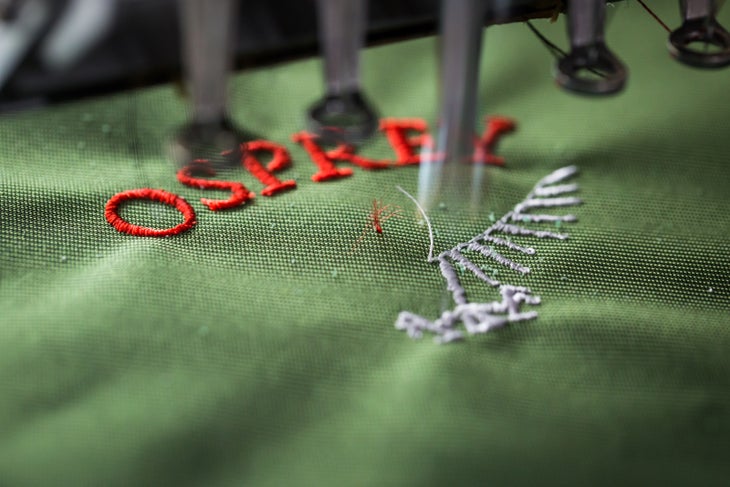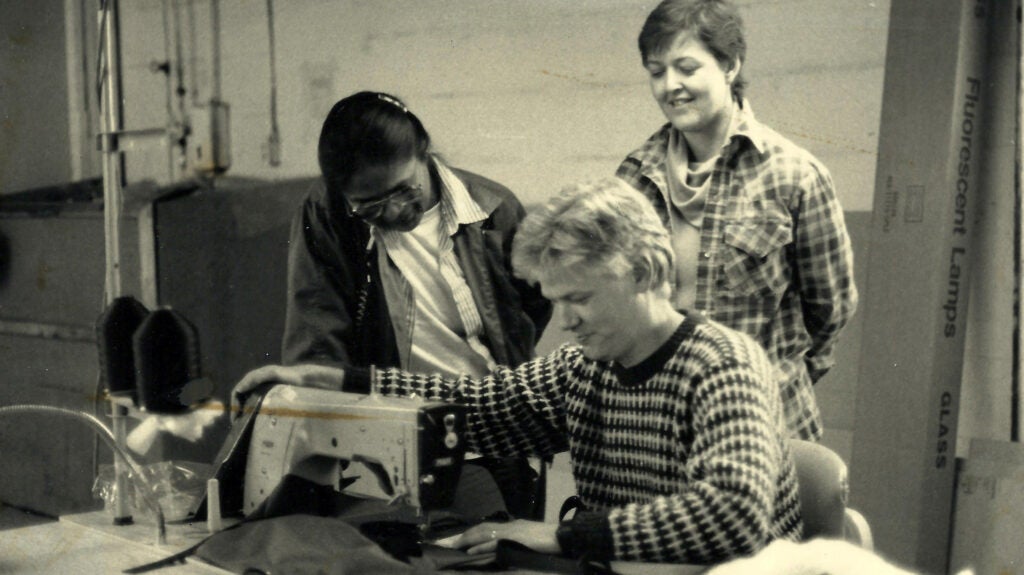No products in the cart.
Outdoor Adventure
Osprey Turns 50, Hikers Get the Presents
Fifty years ago, a young artist and hiker in Santa Cruz, California, dropped out of college and opened a backpack shop. That little storefront in downtown Santa Cruz grew into Osprey, an award-winning company that leads the backpack and luggage category and has become a household name among backpackers, hikers, cyclists, and travelers the world over. As the brand celebrates its golden anniversary this year, it’s doubling down on its heritage as a brand focused solely on making the world’s best packs. No distractions, just a single-minded commitment to expert design, sustainable manufacturing, and inclusive sizing. Here’s how Osprey got here and where it’s going.
The First 50 Years
Mike Pfotenhauer opened Santa Cruz Recreational Packs in 1974, offering gear repair and custom-made backpacks to local outdoor enthusiasts. He’d grown up backpacking with his family in the Sierra Nevada and by his early 20s was sewing his own gear. After selling a few packs to acquaintances, Pfotenhauer decided to make a go of it. So he borrowed $1,000 from his parents and set up shop.

Within a few years, Pfotenhauer’s designs were earning national attention. A brand-new Outside magazine reviewed the Ariel backpack in 1979. By the mid-’80s, the company had grown to four employees and couldn’t make enough packs to meet demand. A few years later, the brand—now called Osprey, for the raptors that mesmerized Pfotenhauer on his own backpacking trips—moved into larger facilities in Cortez, Colorado. The growing company hired local skilled sewers, many of them members of the Diné (Navajo) tribe, and Osprey packs showed up in more and more retail shops.
Things really got rolling in the early 2000s. First, Erik Weihenmayer became the first blind climber to summit Mount Everest, in 2001, and he did it while carrying an Osprey Aether 60 pack. (Weihenmayer and his pack graced the cover of Time that year.) Then Pfotenhauer moved the company’s manufacturing to Vietnam in 2003—and moved there himself as well to be closer to the beating heart of the manufacturing process. (Development and warranty repairs remain in Cortez, while designers are located in Cortez, Vietnam, California, and New Zealand.)

Through it all, Osprey has remained hyperfocused on backpacks and luggage, a laser focus that helped the brand rack up countless awards for design and innovation. Milestones along the way include a custom-fit women’s-specific backpack in 1993, the Straightjacket suspension compression system a few years later, and the Antigravity suspension system, launched in 2015. The Antigravity design set a new standard for comfort and breathability, earning a prestigious Backpacker Editor’s Choice Award for the Atmos AG/Aura AG.
Not surprisingly, Osprey stands firmly, even radically, behind its products. The brand’s All Mighty Guarantee promises a free repair on any Osprey pack, no matter how old.
The Next 50 Years
Osprey is hardly resting on its laurels in this anniversary season. The 2024 collection honors the brand’s 50-year tradition by continuing to push the limits—whether that’s in design innovation, sustainable practices, or expanding access to the outdoors to everyone.
Technical Innovation
The toughest, most technically cutting-edge backpacks live in Osprey’s Pro series. This collection of top-of-the-line pieces is designed for experienced outdoorspeople, from guides to long-distance hikers to seasoned adventurers. Pro series packs prioritize performance through innovative fabrics, advanced suspension systems, custom features, and bomber construction.
The newly updated Talon Pro/Tempest Pro is the latest daypack to join the collection. It’s available in both men’s and women’s fits and three sizes—20 liters (ideal for peakbagging and bikepacking), 30 liters (versatile enough to handle a variety of day trips), and 40 liters (best for gear-heavy days and even minimalist overnights). A new injection-molded framesheet and torso adjustment tool add structure to the pack without weighing it down and provide a custom torso fit, while its ultradurable NanoFly fabric with a triple-grid ripstop reinforcement ensures the Talon Pro/Tempest Pro can handle the toughest excursions.
Sustainable Design
Osprey’s commitment to reducing its environmental impact hits a new benchmark in 2024, with 48 percent of its product line meeting the requirements for Bluesign certification, a measure of product safety to people and the environment. Over the past few years, the brand has also dramatically increased its use of 100 percent–recycled fabric in its packs’ main bodies and eliminated the use of harmful PFAS in its DWR treatments.
Osprey’s dedication to sustainability is best seen in its Earth line, a collection of backpacks that push the boundaries of renewable materials and eco-friendly processes. The new special-edition Daylite Earth daypack is a prime example: This versatile design features a main body and bottom woven from 100 percent Regen Ocean recycled polyester, a fabric made entirely from postconsumer plastic bottles that otherwise would have ended up in the ocean. Its webbing, edge binding tape, zippers, and thread are all 100 percent recycled. The EVA foam back panel is 50 percent recycled, and the plastic hardware is made from bio-based captured agricultural methane.
Inclusive Sizing
Osprey believes everyone deserves a chance to experience the outdoors outfitted with the best gear. That’s why the brand launched its Extended Fit series in 2023. The packs, created specifically for bigger bodies, feature hipbelts that fit hips up to 70 inches, extended shoulder and sternum straps, and repositioned pockets for greatly improved comfort and performance.

In 2024, the Extended Fit family is adding options for backpacking, day hiking, biking, and running. The new Raptor/Raven brings inclusive sizing to the Osprey mountain biking collection. This premium bike pack, available in 10- and 14-liter sizes for both men and women, is designed for all-day rides. A bike-specific shoulder harness and hipbelt ensure a stable carry, and an updated 2.5-liter reservoir with a sternum-strap magnetic bite valve attachment is included for convenient hydration.
Whatever you want a pack for, you’ll find best-in-class choices in this year’s Osprey lineup—and for years to come.
Wherever you find adventure, Osprey will be with you. Since 1974, Osprey has provided hikers, backpackers, bikers, and travelers with innovative and long-lasting carry solutions, each thoughtfully designed item reflecting a passion for exploration and the outdoors. Headquartered in the foothills of Colorado’s San Juan Mountains, Osprey’s surroundings provide the ultimate testing ground for all of its products, guaranteeing that its technical packs are up to any challenge.
Source link

